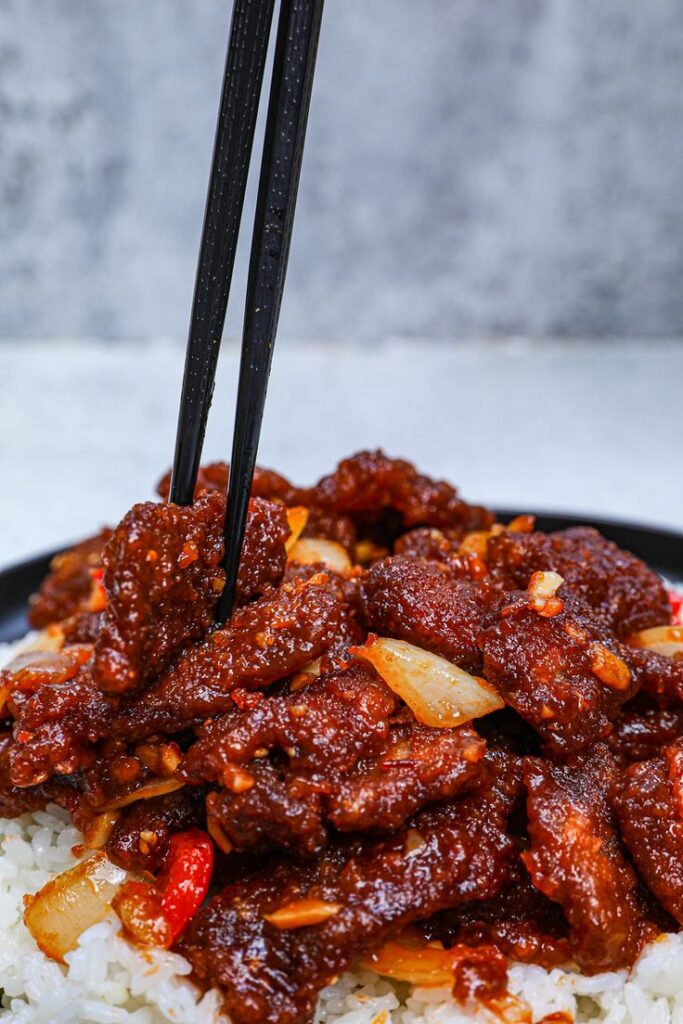
Beijing Beef is a popular dish that many know from their favorite Chinese-American restaurants. It combines tender beef strips with crisp vegetables, all coated in a flavorful sauce. But what if we could elevate this classic dish to a new level? Let’s explore how to make a better version of Beijing Beef that’s not only delicious but also healthier and easy to prepare at home.
Ingredients: A Fresh Take
To create a better Beijing Beef, we start with high-quality ingredients. Here’s what you’ll need:
- Beef: Choose lean cuts like flank steak or sirloin. These cuts are tender and flavorful while being lower in fat.
- Vegetables: Use a mix of bell peppers, onions, and snap peas for color and crunch. Fresh vegetables add nutrients and enhance the dish’s overall appeal.
- Sauce: Instead of using a pre-made sauce loaded with preservatives, make your own using low-sodium soy sauce, honey or maple syrup for sweetness, garlic, ginger, and a splash of rice vinegar for acidity.
Preparation: Step by Step
- Marinate the Beef: Start by slicing the beef against the grain into thin strips. Marinate it for at least 30 minutes in a mixture of soy sauce, garlic, ginger, and a bit of cornstarch. The cornstarch helps tenderize the meat while creating a nice coating.
- Prepare the Vegetables: While the beef marinates, wash and chop your vegetables. Aim for bite-sized pieces to ensure even cooking. The colorful mix of peppers and onions will make your dish visually appealing.
- Make the Sauce: In a small bowl, whisk together low-sodium soy sauce, honey or maple syrup, minced garlic, grated ginger, and rice vinegar. This combination balances sweet and savory flavors and keeps the dish healthier than traditional recipes.
- Cooking: Heat a wok or large skillet over high heat. Add a tablespoon of oil (like sesame or canola) and stir-fry the marinated beef until browned and cooked through, about 3-4 minutes. Remove the beef and set it aside.
- Stir-Fry the Vegetables: In the same pan, add more oil if needed and toss in your vegetables. Stir-fry for about 2-3 minutes until they are tender yet still crisp. The high heat helps to maintain their vibrant color and crunch.
- Combine: Return the cooked beef to the pan with the vegetables. Pour in the sauce, stirring to coat everything evenly. Cook for an additional minute or until the sauce thickens slightly.
- Serve: Better Beijing Beef can be served over steamed brown rice or quinoa for a healthier option. Garnish with sesame seeds or sliced green onions for added flavor and presentation.
Healthier Alternatives
To make this dish even better, consider these alternatives:
- Add More Vegetables: Incorporating more vegetables like broccoli, carrots, or baby corn can increase the nutritional value and make the dish more filling.
- Use Whole Grains: Instead of white rice, serve it over brown rice, quinoa, or cauliflower rice for added fiber and nutrients.
- Reduce Sugar: Adjust the sweetness in your sauce by reducing the amount of honey or syrup. You can also experiment with natural sweeteners like stevia.
Conclusion: A Dish for Everyone
Better Beijing Beef is not just a dish; it’s an opportunity to enjoy a classic meal with a healthier twist. By focusing on fresh ingredients, homemade sauces, and balanced nutrition, you can create a meal that satisfies cravings without compromising health.
Whether you’re cooking for yourself, family, or friends, this recipe is sure to impress. Plus, the quick preparation and cooking time make it an excellent choice for busy weeknights. Embrace the flavors of Beijing Beef in a better way—your taste buds and your body will thank you!